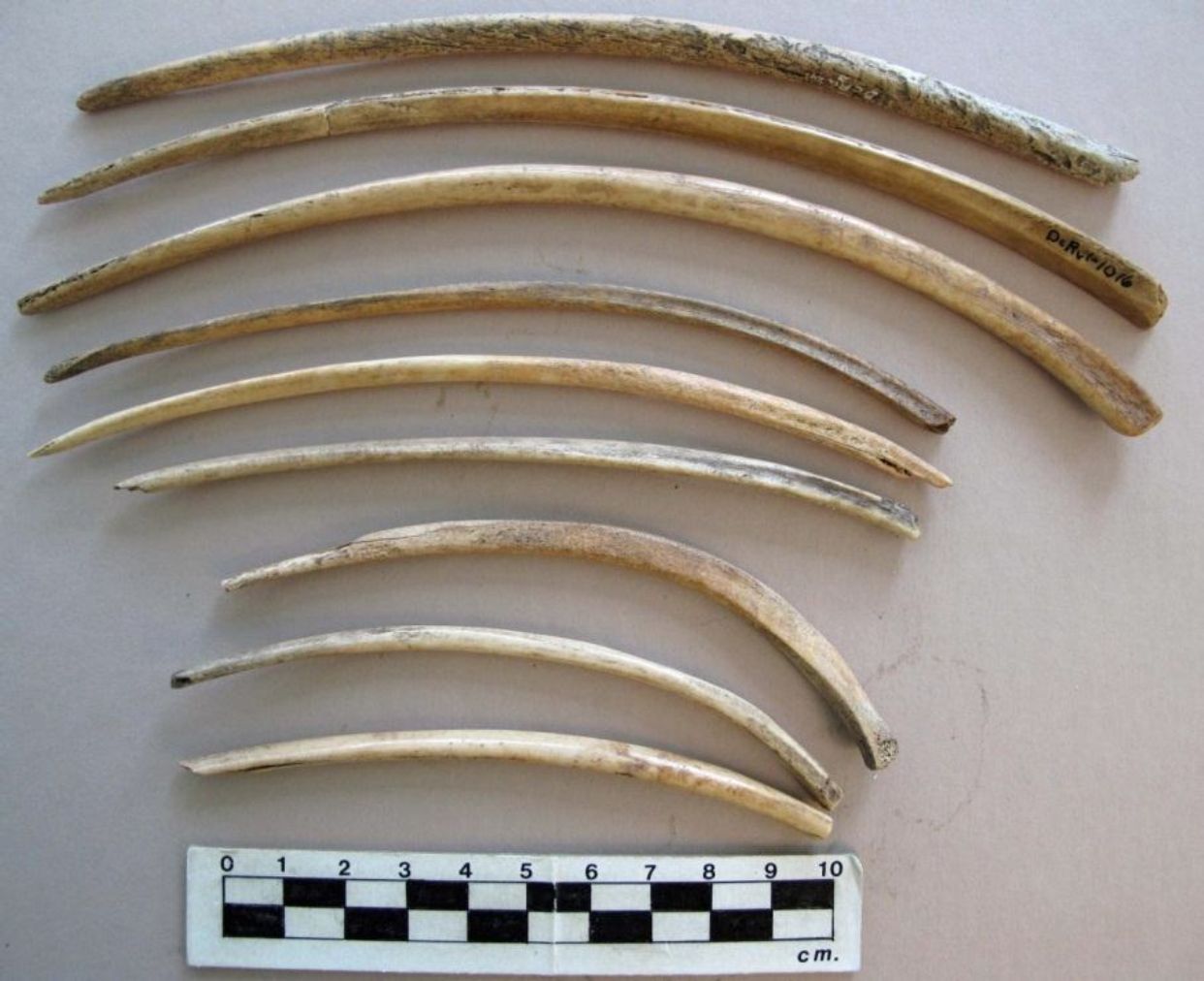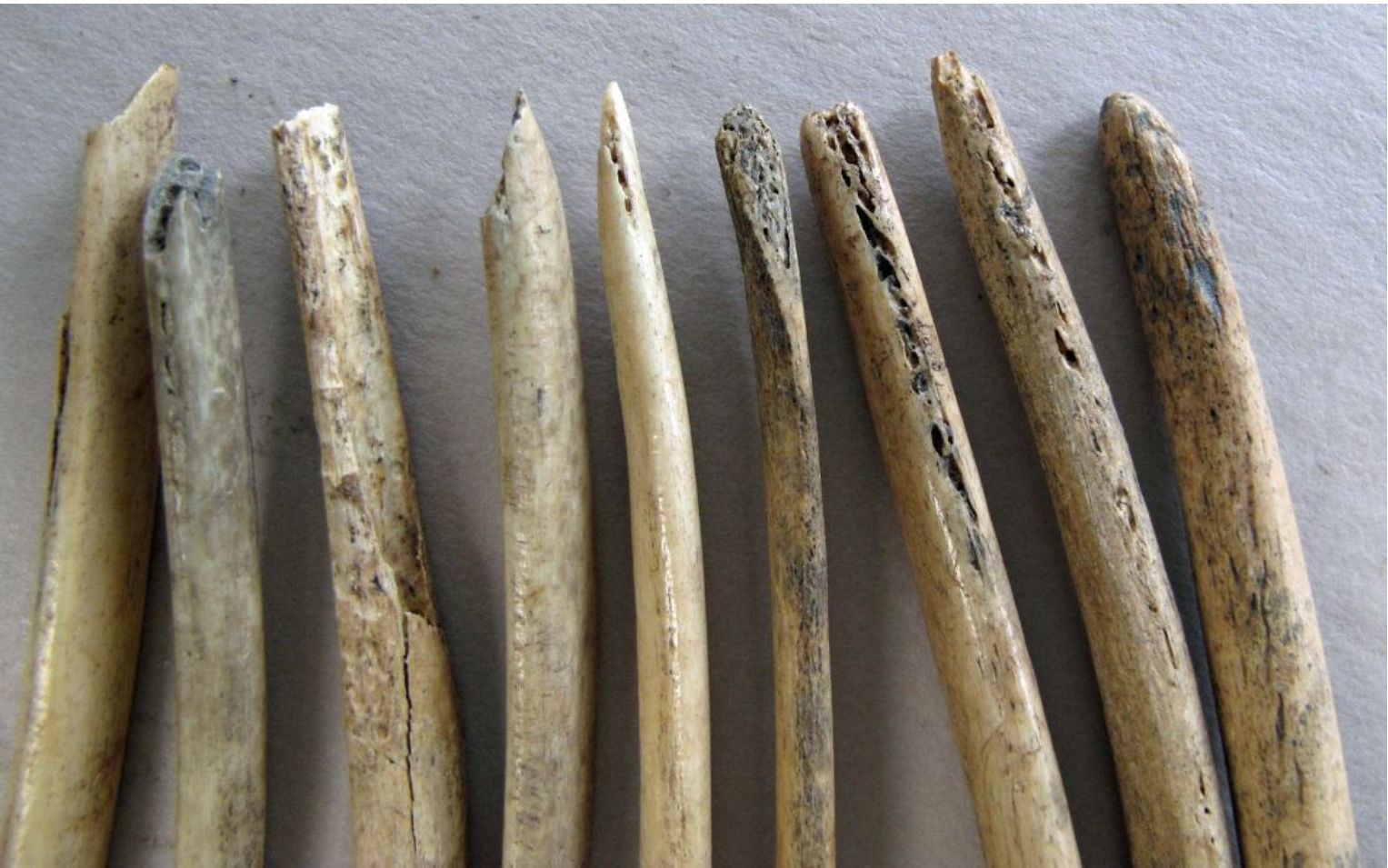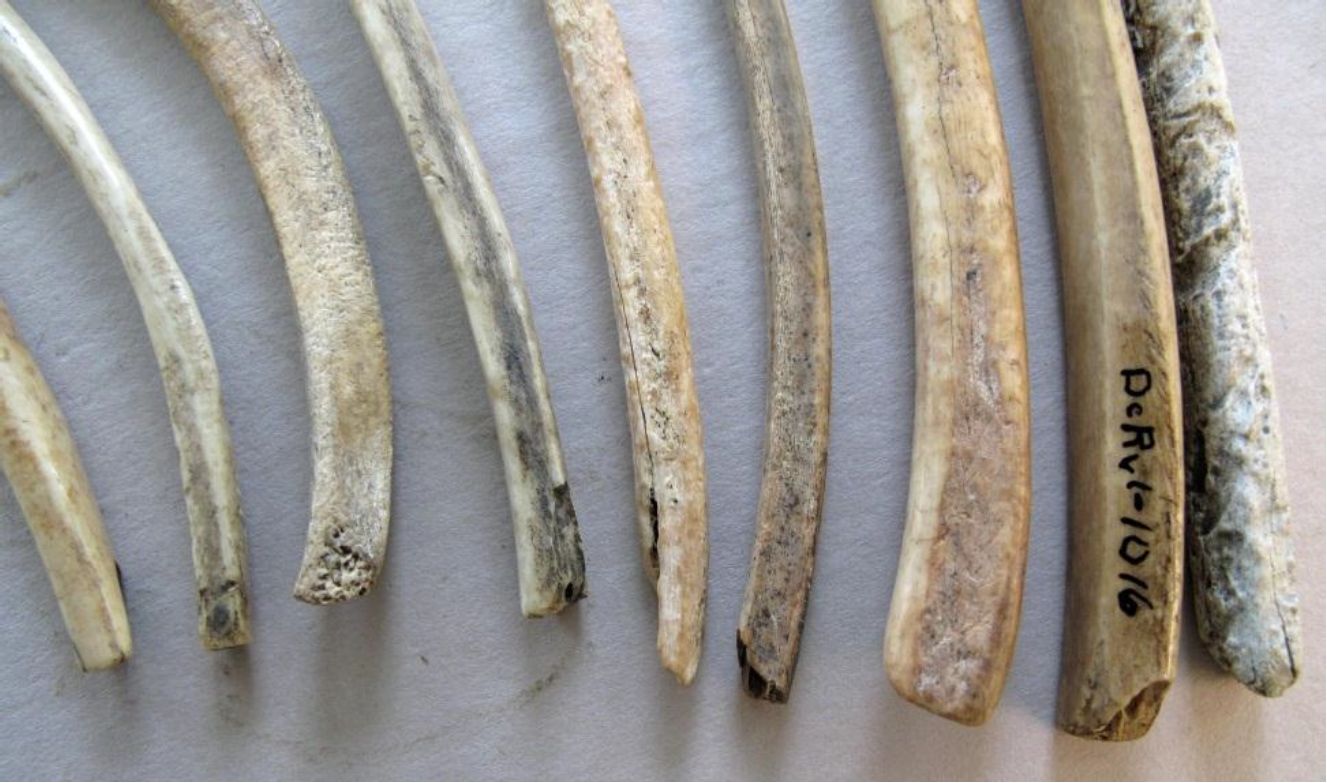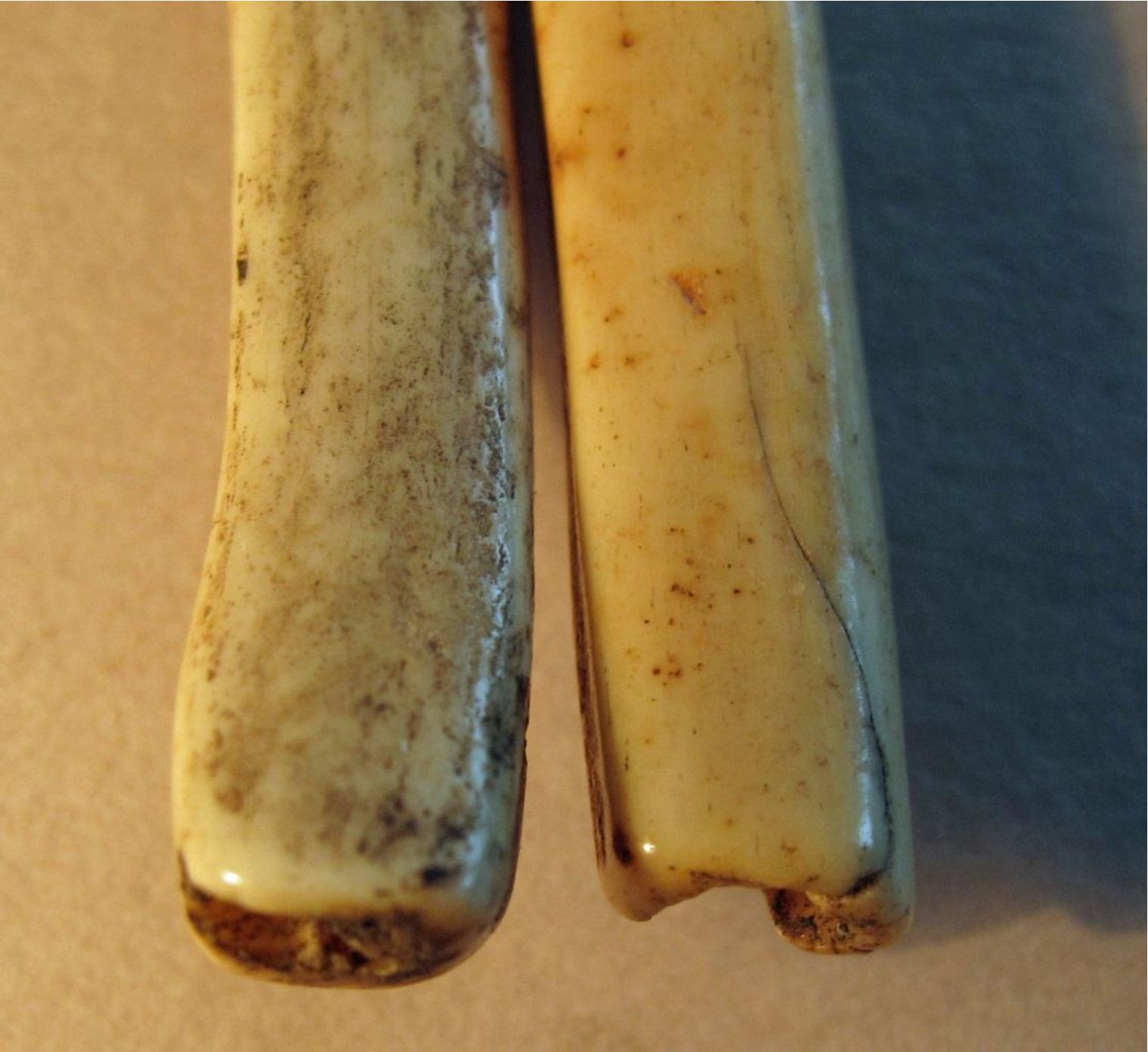By Grant Keddie. 2012.
Introduction
One type of artifact that bridges the gap between archaeology and ethnology in British Columbia are bone food strainer prongs. Archaeologists have often described these as worked rib artifacts without a suggestion as to what they might be. They are usually made of seal or deer ribs, but some are also of antler. A number of these artifacts share similar characteristics to the prongs of rare food strainers found in ethnology collections.
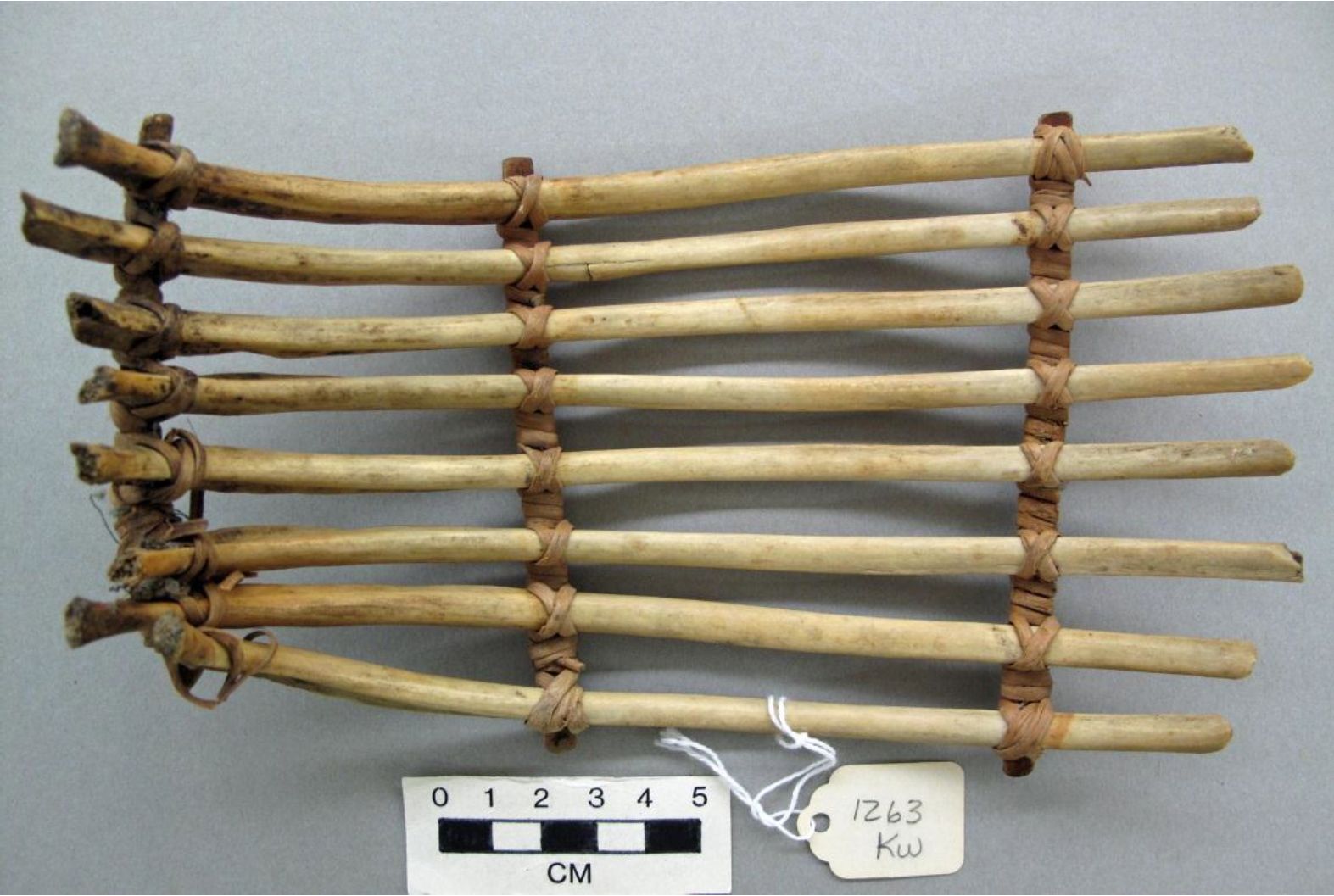

The ethnographic examples given here are from further north than the archaeological examples shown. However, I suspect that bone food strainers were disused earlier in the historic period in the south and did not get documented by ethnologists or placed in Museum collections.
Ethnographic Examples
The Royal B.C. Museum ethnology collection has one example of a strainer made with eight bone prongs. Artifact 1263, was purchased by Charles Newcombe in 1899, at Nawhitti, on Vancouver Island. It was entered into the Museum collection in 1900, as a “Kwakiutl fork of seals ribs”. Newcombe’s notes add “with spruce root lashings”, used “for lifting food from cooking vessels”.
Franz Boas has a drawing of a similar strainer used: “For lifting fish and meat out of the kettle, the Koskimo use strainers made of ribbones of the seal, which are tied together along three sticks” (Boas 1909:424).
Two of these strainers, collected in the 1890s, are in the American Museum of Natural History collection. Number E/2490 (220mm by 130mm), was collected by George Emmons in 1894, and listed as being Tsimshian from the Nass River.
It has eight ribs and wrapped spruce root fibre attaching the three wooden braces to the bones. The catalog indicates that it was “used as a strainer in removing fish, meat, potatoes, etc. from the boiling water – from the Nass River Tsimshian people originally, not of Tlingit origin or manufacture”.
Another strainer, number 16/2298 (240mm by 125mm), is listed as Kwakiutl from Fort Rupert, and collected by George Hunt for Franz Boas during the Jessup Expedition of 1897.
It has only six, wider spaced and flatter, ribs and does not have a wooden brace at the proximal end – here it is tied directly from rib to rib.
Characteristics of RBCM artifact 1263.
This 210mm long artifact has upward curving bones, especially at the proximal or handle end. The eight individual ribs range from 4mm-7mm wide.
Three wooden braces extend across the ribs, where they are wrapped in place by split spruce root ties. The length of each brace, starting at the proximal end is 92mm, 113mm and 125mm. The distance between the centres of the braces are 64mm and 86mm.
The proximal ends of the bones are usually partially broken off. Some ends were cut and snapped off, and then roughly ground to smooth off any sharp surfaces. Some ends are subsequently polished from use.

The distal ends of the bones range from pointed to a rounded wedge-like shape. The ends are often roughly rounded by grinding.
The edges near the distal ends are sometimes ground to produce a more tapering point and thus exposing the inner bone structure.
There are no distinct polished areas near the distal ends as one might expect on tools used in hide or fibre manufacture. Any polishing or scratching from use is distributed along the ribs.
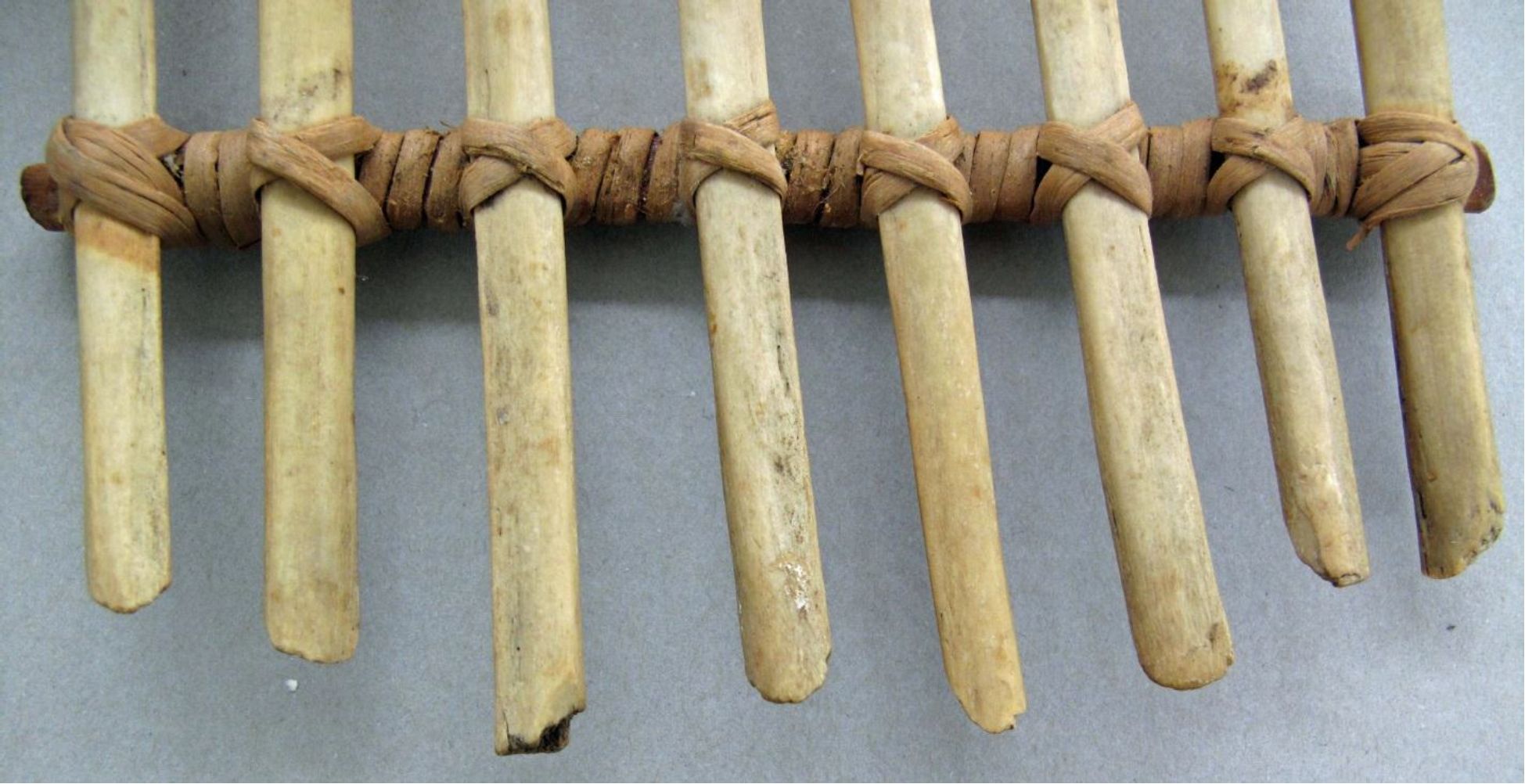
Conclusion
Given the extensive use of boiling for cooking foods by First Nations, it is likely that food strainers were a very common artifact in the past. Those in the RBCM archaeology collection are mostly found in sites that have late period time components – that is, at least the last 800 years. Strainer prongs are likely an important component of past behavior that we need to be conscious of documenting more thoroughly.

